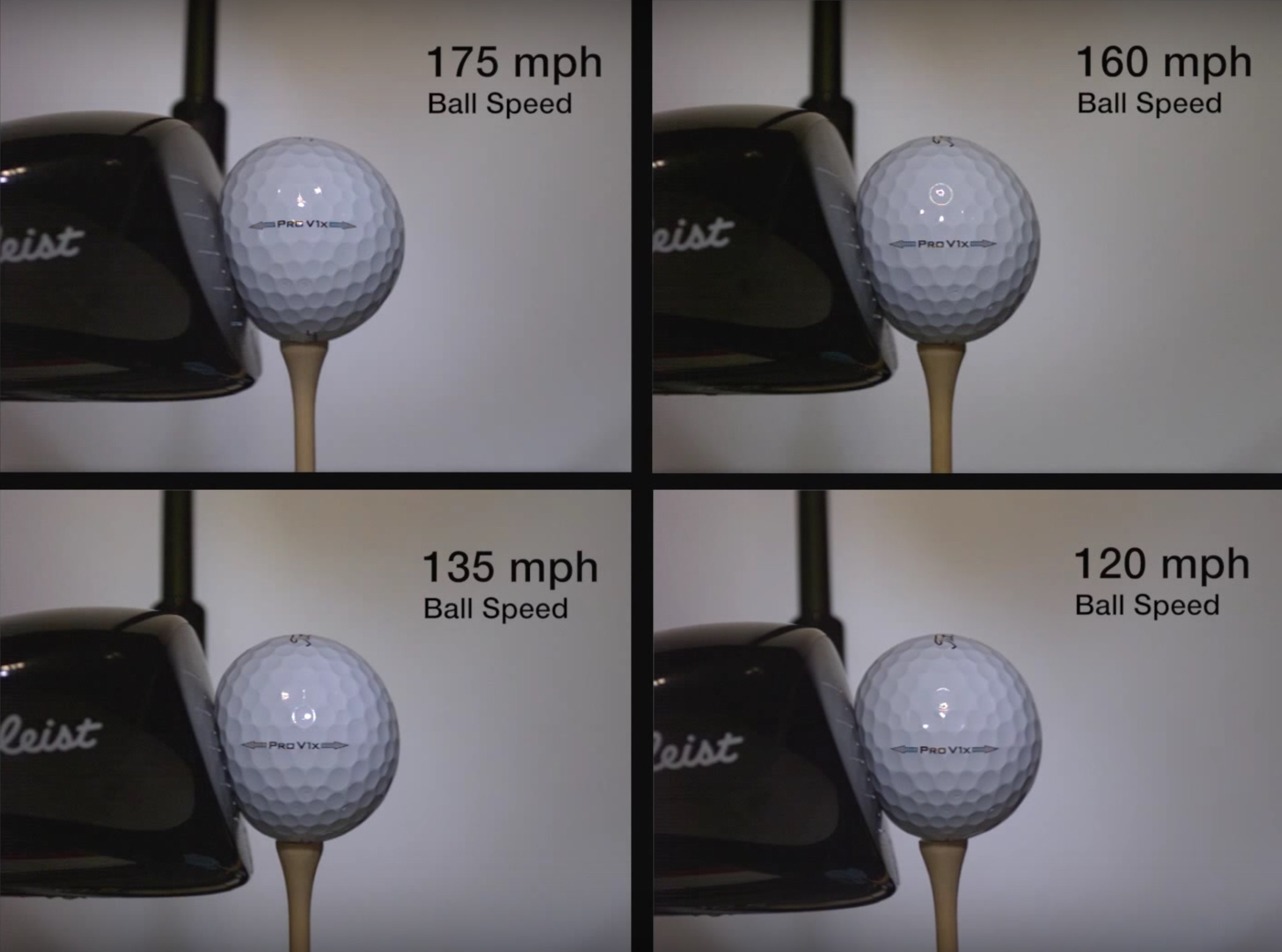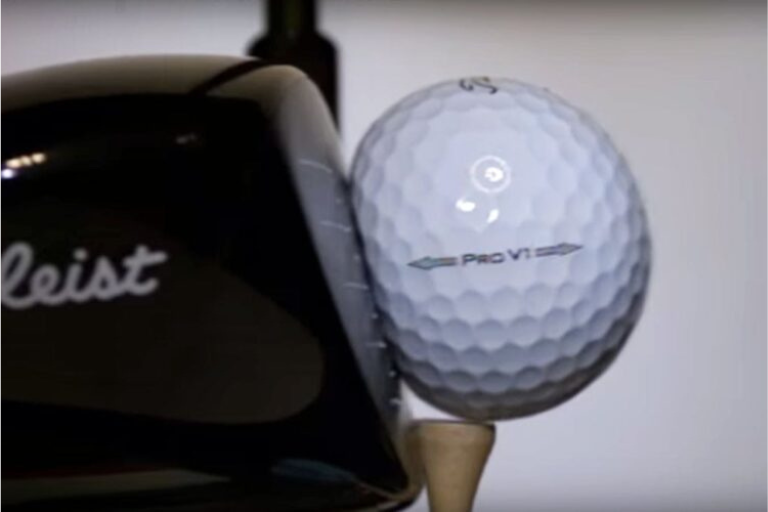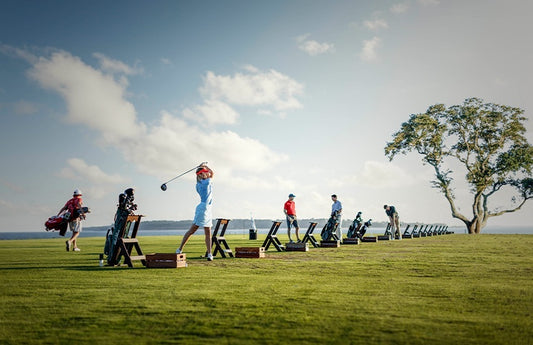In the game of golf, the performance of a ball is a critical aspect that can influence a player's score significantly. Golf ball compression is a term that describes how much a golf ball deforms under the impact of a golf club. The compression of a golf ball can affect the distance, accuracy, and spin of a shot. It is a crucial factor that golfers of all skill levels consider when selecting the right ball for their game. Low compression balls are typically softer and can be beneficial for those with a slower swing speed, as they help to maximize distance. Conversely, golfers with a faster swing speed may prefer high compression balls for greater control and feel.
Understanding how golf ball compression interacts with our swing speed is essential for optimizing our performance on the course. The material and construction of a golf ball also play a significant role in its compression characteristics. Technological advancements in golf ball design continue to tailor golf ball performance to individual playing styles and swing speeds. By selecting the correct compression rating, we can ensure that the ball's reaction off the club face complements our playing style, ultimately leading to better shot outcomes. Moreover, grasping the fundamentals of this concept allows us to make informed decisions when faced with a myriad of golf ball options and to adapt to different playing conditions effectively.
Key Takeaways
- Golf ball compression significantly influences distance, accuracy, and spin.
- The right compression rating varies depending on the player's swing speed.
- Technological improvements in golf ball design enhance performance matching.
Fundamentals of Golf Ball Compression

Golf ball compression is a critical factor that determines how the ball behaves when we strike it. Compression refers to the degree to which the golf ball deforms upon impact with the clubhead. The value of compression is often rated on a scale, typically ranging from 50 to 100, indicating the ball's hardness.
- Low Compression (50-70): Suitable for players with slower swing speeds.
- Medium Compression (70-90): Ideal for most amateur players.
- High Compression (90+): Best for players with fast swing speeds.
We measure the compression of a golf ball to understand how it will react when hit. A low compression ball, which is softer, tends to deform more easily than a high compression ball. This contributes to how much control and distance we can achieve with a particular swing speed.
For golfers with slower swing speeds, a ball with lower compression can be beneficial. It requires less force to compress the ball, which can lead to longer distances, even with a slower swing. Conversely, for those of us with faster swing speeds, a higher compression golf ball can be advantageous as it provides better energy transfer from the club to the ball, resulting in greater control and distance.
The feel of the golf ball at impact is also influenced by its compression rating. It's essential for us to choose a ball that complements our swing characteristics for the best results on the course. For more detailed explanations and examples, check out Understanding Golf Ball Compression and how it affects various aspects of performance.
Impact of Compression on Ball Flight Characteristics 
Golf ball compression significantly influences how the ball behaves in the air, particularly affecting distance and trajectory, as well as spin rate variation.
Distance and Trajectory
The compression of a golf ball correlates directly with its potential distance and the trajectory it will follow through the air. A higher compression rating typically means a firmer golf ball that tends to travel further and with a lower trajectory compared to softer, lower compression golf balls. This is because high compression balls deform less on impact, transferring more energy for forward motion. Golfers with a fast swing speed will benefit the most from higher compression balls due to their ability to deform the ball sufficiently for optimal energy transfer.
Spin Rate Variation
The rate at which a golf ball spins off the club face can dramatically affect the control a player has over ball flight and landing position. Lower compression golf balls generally produce a higher spin rate, especially beneficial for shots around the green, where control is more desirable than outright distance. Conversely, high compression golf balls offer a lower spin rate, which may suit more experienced players looking to maximize distance and minimize the ball's deviation from the intended flight path due to aerodynamic effects.
Correlation Between Swing Speed and Compression
Understanding the correlation between swing speed and golf ball compression is essential for optimizing performance. Compression directly affects the distance and control a player can achieve, depending on their swing speed.
Optimal Compression for High Swing Speeds
For golfers with high swing speeds, typically over 105 mph, a high compression golf ball is often recommended. These balls have a compression rating of 90 and above. High compression balls maintain their shape less upon impact, leading to more energy transfer and greater distance. Players with faster swing speeds are able to compress these harder balls effectively, which can result in a more controlled, accurate flight path.
Optimal Compression for Average Swing Speeds
Golfers with average swing speeds, which fall between 85 to 104 mph, tend to benefit from a medium compression golf ball. These balls typically have compression ratings between 80 to 89. With a balanced degree of compression, these balls offer a blend of distance and a soft feel. They provide good energy return without requiring the high force that faster swingers deliver, making them suitable for a broad range of players.
Optimal Compression for Low Swing Speeds
Players with lower swing speeds, under 85 mph, such as juniors, seniors, and some women, will find better performance with low compression golf balls. These balls, with compression ratings below 80, deform more on impact and create more spring off the clubface, compensating for the lower swing speed and helping to maximize distance. The lower compression provides a softer feel, which can be advantageous for players it suits.
Material and Construction Influence on Compression
We can observe that golf ball construction significantly determines its compression level. The core is the heart of the golf ball, often made from rubber or resin, and its properties are central to compression behavior. Materials like synthetic compounds can also be used, affecting how much the ball will compress upon impact.
Different layers of construction play a vital role as well. A multi-layered ball will typically have varied compression properties, as each layer can be designed to enhance different aspects of performance. For instance, a ball with a larger core and thinner cover will likely have a different compression rating than one with a smaller core and thicker cover.
The cover material also impacts compression, influencing the feel and durability of the ball. Typically, urethane or surlyn covers are used, with each providing a distinct sensation and response when striking the ball. Here's how these materials generally differ in influence:
- Urethane: Offers a softer feel and typically has a lower compression, suitable for producing more spin and control.
- Surlyn: More durable and typically has a higher compression, contributing to longer distance shots for players with faster swing speeds.
| Core Material | Typical Compression | Suitable Swing Speed |
|---|---|---|
| Rubber | Low to Medium | Slower to Moderate |
| Resin | Varying | Varying |
| Synthetic | Medium to High | Moderate to Fast |
Our gear choices, then, must account for the materials and construction of golf balls to match our swing speed for optimal performance on the course. Selecting the right compression can be a key for maximizing distance while maintaining control and feel during the game.
Measuring Compression and Its Effects
Understanding golf ball compression is crucial for optimizing performance on the course. We will explore how standardized tests define a ball's compression rating and then examine how compression impacts gameplay for golfers with various swing speeds.
Standard Compression Tests
In a standard compression test, golf balls are subject to a consistent force, and their degree of deformation is measured. This deflection, typically expressed in points, helps us categorize balls from soft to firm. A ball with a compression rating around 50 is considered low-compression, suitable for those with slower swing speeds, whereas a rating above 100 denotes a high-compression ball, favored by players with faster swings. The Callaway Supersoft golf ball, for example, had a notably low compression rating of 38.
Real-World Performance Analysis
When we analyze real-world performance, we consider how a ball's compression affects its distance and control. Lower compression balls are more prone to deform, leading to a softer feel and potentially greater distance for players with slower swings. Conversely, high-compression balls can offer more control and are less likely to deform, translating to a more solid feel upon impact, as well suited for players with brisker swings. Swing speeds play a pivotal role here; the correct match can mean the difference between maximizing distance and precision or losing out on both.
Golf Ball Selection Strategies
Selecting the appropriate golf ball is crucial as it has a significant impact on your game. The key is to match the golf ball's compression to your swing speed while also taking into account various environmental factors.
Choosing the Right Compression for Your Game
We need to understand that golf ball compression relates directly to the transfer of energy from the swing to the ball. If you have a faster swing speed, we recommend opting for a higher compression golf ball, as it can withstand the force and transfer the energy efficiently for maximum distance. For those with slower swing speeds, a lower compression ball is beneficial because it deforms more with less force, helping to maximize distance with a softer feel.
Weather and Environmental Considerations
When we play in colder weather, a softer, low-compression golf ball is advantageous because it can compensate for the reduced elasticity that comes with cooler temperatures. Conversely, in hot conditions, high-compression golf balls may perform better and maintain their intended flight characteristics. Additionally, consider your typical playing conditions; if you usually play in windy areas, a golf ball with lower spin rates may help in reducing the wind's impact on your shots.
Professional Insights on Compression Choices
When we talk to golf professionals about ball compression, they emphasize its critical role in optimizing performance. Compression, measured in numbers, typically ranges from low (below 80) to high (above 100).
For slower swing speeds under 85 MPH, low compression golf balls are the usual recommendation. These balls are softer and extend driving distance by compressing more easily upon impact.
- Advantages: Improved feel, greater distance
- Examples: 50 compression balls are very soft, ideal for beginners or those with slower swings.
For average swing speeds, between 85 and 105 MPH, medium compression golf balls are suggested.
- Advantages: Balanced feel, moderate control
- Examples: An 80 to 90 compression ball suits a wide array of players.
Those with faster swing speeds over 105 MPH typically opt for high compression balls.
- Advantages: Better control, less deformation
- Examples: 100+ compression balls complement players capable of maximizing their energy transfer.
Experienced players might lean towards high-compression balls for their reduced spin and wind resistance traits, aiding in distance and shot shaping. It's essential, however, that each golfer assesses their swing speed and skill level to match the right compression rating, for the sake of both performance and enjoyment on the course.
Technological Advances in Golf Ball Design
In the realm of golf, manufacturers have consistently pushed the boundaries of technology to improve ball performance. We have witnessed significant advancements in materials and design, leading to golf balls that are tailored to different playing styles and swing speeds.
Materials: Traditionally, golf balls were constructed with a solid rubber core, but modern designs often feature multi-layer structures. These can include a softer inner core surrounded by firmer layers, which work together to enhance energy transfer from the club to the ball. By optimizing the core materials, engineers help us find golf balls that suit our golf game best.
Aerodynamics: We've seen the dimple pattern of a golf ball become a focus for technological innovation. Altering dimple shape, size, and pattern has allowed us to achieve more stable and efficient flight paths. Adjustments here cater to different swing speeds, affecting both distance and accuracy.
Compression: It is now understood that golf ball compression matters and should match our swing speed. Lower compression balls benefit those with slower swings, while higher compression is ideal for faster swings. Manufacturers have developed a range of options, from lower compression to high compression, ensuring every player can find a ball that enhances their performance.
By embracing these technological innovations, we give ourselves the best chance to succeed on the course, using golf balls specifically engineered to meet our individual needs based on our swing characteristics.
Frequently Asked Questions
In this section, we'll address some common inquiries regarding the relationship between golf ball compression, swing speed, and performance on the course.
What impact does golf ball compression have on a player’s distance and accuracy?
Golf ball compression can significantly influence the distance a golf ball travels and its flight accuracy. A properly compressed ball can create an optimal rebound effect off the club face, leading to greater distance. Conversely, accuracy can be affected if the compression does not match the golfer's swing speed, resulting in less control over the ball's trajectory.
How do low compression golf balls perform for golfers with slower swing speeds?
Low compression golf balls are designed to deform more easily upon impact, providing a spring-like effect even at slower swing speeds. This design helps golfers with slower swings achieve better distance and an improved feel off the club understanding golf ball compression.
To what extent does golf ball compression influence a golfer's ability to control the ball around the green?
The ability to control the ball around the green is influenced by its compression, as it affects the ball's response to spin and touch. Lower compression balls tend to generate more spin at lower swing speeds, which can enhance control during short game shots where precision is crucial.
What are the benefits or drawbacks of using a high compression golf ball for players with high swing speeds?
Players with high swing speeds generally benefit from high compression golf balls, as these balls are less prone to deforming and thus maintain energy more efficiently for longer flights. However, they may also result in a firmer feel and possibly less control on finesse shots for some golfers benefits of high compression golf balls.
Can using the appropriate golf ball compression improve the overall lifespan of the ball?
Using the matching compression for a golfer’s swing speed can potentially minimize excessive wear, as the ball is less likely to be deformed beyond its design specifications. Properly compressed balls are more resilient and, therefore, may last longer golf ball compression and durability.
What considerations should a golfer make when choosing a golf ball based on their swing speed and the course conditions?
Golfers should consider their swing speed, aiming for a ball with a compression that complements that speed. The course conditions are also critical; softer balls may be more suitable for wet conditions, while firmer, high-compression balls could perform better on dry, hard courses choosing golf balls for different conditions.


